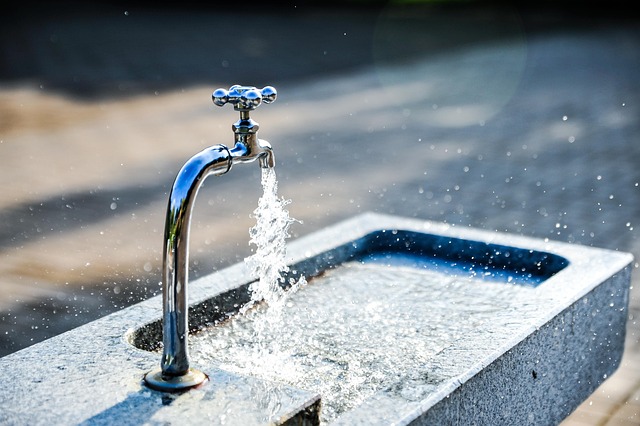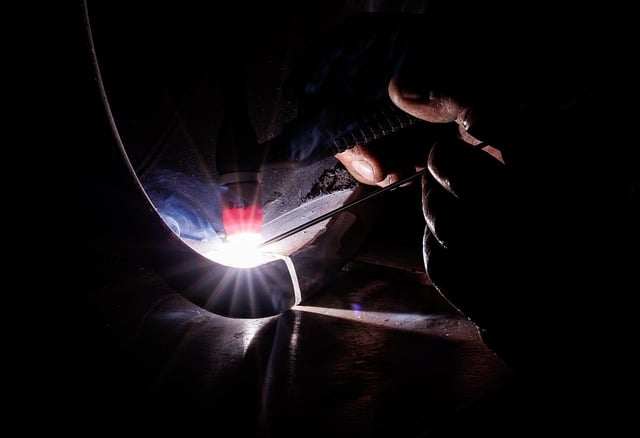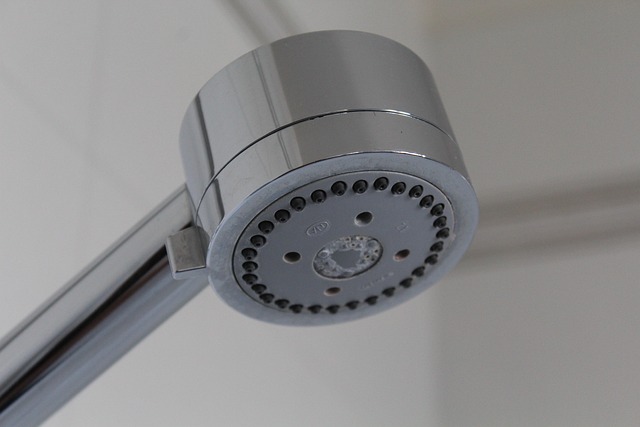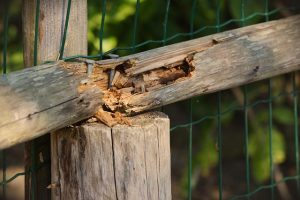This text provides an all-encompassing guide to fixing common faucet issues, focusing on valve problems. It identifies three primary valve types—disk, cartridge, and ball valves—and emphasizes understanding their unique mechanisms for effective repairs. The process involves gathering essential tools, shutting off the water supply, removing and inspecting old valves, replacing worn parts like washers, O-rings, and cartridges, and applying plumbing-grade sealants to prevent leaks. Regular maintenance through periodic inspections, tightening, lubricating, and cleaning can significantly prolong faucet lifespan.
Looking to fix that leaky or sluggish faucet? This comprehensive guide dives into the world of faucet valve repair, equipping you with the knowledge to tackle common issues. From identifying the different types of valves to gathering the necessary tools and materials, we break down the process step-by-step. Learn how to disassemble, inspect, replace parts, tighten connections, test your repairs, and prevent future problems. Conquer faucet repair with our expert tips and tricks – save time, money, and avoid unnecessary plumber visits.
Understanding Common Faucet Valve Issues

Many common faucet repair issues stem from problems with the valve mechanism. Over time, these valves can become worn out or damaged, leading to leaks, low water pressure, or even a complete loss of water flow. One frequent issue is a broken or misaligned seat, which prevents the valve from sealing properly. This results in continuous dripping and can be easily addressed by replacing the seat and washer.
Another prevalent problem is a faulty cartridge or stem. Cartridges act as an internal valve, controlling water flow. If they become damaged or stuck, water may leak from the faucet or fail to turn on altogether. Replacing the cartridge or stem is typically a straightforward process that requires only basic tools. Identifying the specific issue is key to effective faucet repair, ensuring homeowners can fix problems quickly and efficiently.
Identifying the Different Types of Faucet Valves

When it comes to faucet repair, understanding the different types of valves is key. Modern faucets typically use one of three main valve types: disk, cartridge, or ball. Each operates with a unique mechanism that controls water flow and temperature. Disk valves, for instance, rely on a seal to stop water flow; replacing this seal is often all it takes to fix a leaking faucet. Cartridge valves contain a replaceable cartridge with internal parts that control water flow and temperature mixing. These are known for their durability and simplicity in repair, as replacing the cartridge usually fixes issues. Ball valves, characterized by a spherical interior component, offer precise control over water flow and temperature; they’re more complex to fix but are valued for their longevity and ability to prevent leaks.
Identifying your faucet’s valve type is crucial for effective faucet repair. Visual inspection can often reveal the type, with disk valves usually having a flat or slightly rounded surface, cartridge valves featuring a single handle and a removable cartridge, and ball valves showing three main parts: the handle, stem, and valve seat. Once you’ve determined the type, you can source the right replacement parts for a successful repair, ensuring your faucet functions optimally once more.
Gather Tools and Materials for Repair

Before beginning any faucet repair, it’s crucial to gather all necessary tools and materials. For most standard faucet issues, a few basic items will suffice. Start by collecting an adjustable wrench or pliers, replacement seals or O-rings specific to your faucet model, teflon tape, and new washer and nut sets if needed. These essentials are often all that’s required for common faucet repair tasks such as tightening leaks or replacing worn-out parts.
When tackling a faucet repair, having the right materials makes the process smoother and more efficient. Teflon tape is particularly useful for sealing connections and preventing leaks, while adjustable tools allow for precise adjustments without damaging components. Always double-check compatibility by referring to your faucet’s model number or consulting manufacturer guidelines to ensure you have the correct replacement parts on hand.
Steps to Disassemble and Inspect the Valve

To begin your faucet valve repair, the first step is to disassemble the valve. Start by turning off the water supply to your faucet to prevent leaks and ensure safety during the process. Then, locate the valve under the faucet and use a wrench or pliers to carefully remove the nuts securing it in place. Once unscrewed, gently pull out the old valve for inspection.
Inspecting the valve allows you to identify any damage, corrosion, or debris that may be causing the leak or dysfunction. Look for worn-out seals, damaged parts, or any signs of rust. This visual assessment will guide your repair process and help you determine if replacement parts are needed. Take note of the measurements and specifications of the old valve to ensure compatibility with new parts during reassembly.
Replacing Worn-Out Parts: A Comprehensive Guide

When it comes to faucet repair, replacing worn-out parts is often a straightforward process that can extend the life of your fixture. Common issues like leaky faucets or low water pressure are usually caused by damaged or outdated components, such as washer packs, O-rings, and cartridge assemblies. Identifying these parts and purchasing high-quality replacements from a hardware store is the first step in fixing these problems effectively.
To ensure a successful replacement, gather all necessary tools—like pliers, screwdrivers, or adjustable wrenches—and follow instructional guides available online or in your faucet’s packaging. Precise disassembly may be required to access and swap out these parts, so taking your time and being methodical will help you avoid further damage. Regular maintenance, including periodic cleaning and checks, can also prevent wear and tear, making future repairs less of a hassle.
Tightening and Sealing Techniques for a Secure Fit

When repairing a faucet valve, tightening and sealing techniques are crucial for achieving a secure fit. Begin by locating the specific parts that need adjustment—typically the stems or cartridges within the valve assembly. Use a wrench or pliers to gently tighten these components, ensuring they are securely in place. Over-tightening can damage internal parts, so exercise caution.
Apply a suitable sealant or grease to the threads and O-rings to enhance sealing capabilities. This prevents leaks at the joints, a common issue with faucet repairs. Choose a product designed for plumbing applications to ensure durability and compatibility. By employing these techniques, you’ll not only restore your faucet’s functionality but also guarantee a leak-free experience for years to come, making your DIY faucet repair project a success.
Testing and Troubleshooting After Repair

After completing a faucet valve repair, it’s crucial to test and troubleshoot the fixture to ensure its functionality. Start by turning on the water supply to check for any leaks around the base or handles—a common issue indicating an improper seal or loose connections. If leaks persist, double-check all fittings and replace any worn-out gaskets or O-rings.
Next, assess the faucet’s performance. Is the flow steady and at the desired pressure? A fluctuating or weak flow might signal a problem with the cartridge or aerator. Inspect these components for debris, corrosion, or damage, and consider replacing them if necessary. Regular testing and maintenance after repair will help extend the lifespan of your faucet and ensure efficient water control.
Maintenance Tips to Prevent Future Faucet Valve Problems

Regular maintenance is key to preventing future faucet valve issues. Start by checking your faucets periodically for any signs of leaks, corrosion, or wear and tear. A simple visual inspection can often reveal problems before they become major repairs. Taking a few minutes each month to tighten loose connections, lubricate valves, and clean aerators can go a long way in extending the life of your faucet.
Consider using specialized cleaning solutions designed for plumbing fixtures to remove mineral deposits and prevent buildup. Additionally, keep an eye on the water pressure; excessive pressure can strain valves and cause damage. Regularly checking and adjusting pressure regulators ensures smooth operation and longevity of your faucet repair efforts.
